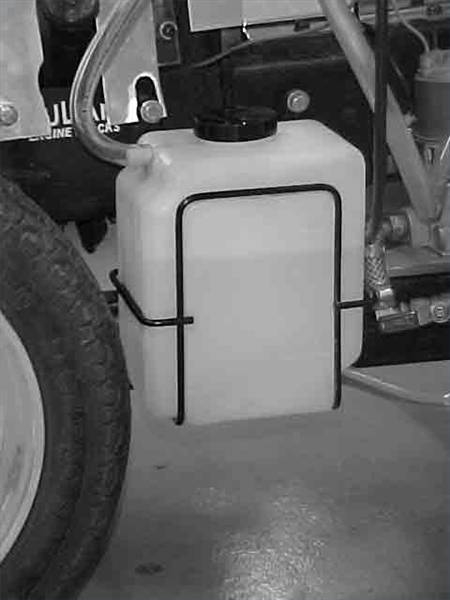
Prior to the existence of plastic gas tanks, the metal ones had a specialized plastic lining that would degrade over several years and fill the inside of the tank with debris. It was thought that making a solid plastic tank would fix this, and while plastic debris is not a problem, other problems have still arisen. When gasoline is left sitting in a tank for a period of months or even years, it separates, leaving a solid sludge at the bottom. Sometimes this sludge breaks up and is carried off into the engine by the fuel lines, which will clog the air filters very quickly. What's even worse, rust and bits of burned carbon can flow back from the engine into the tank. For that reason one should clean out gas tanks every few years--more frequently if the tanks contained mixed gas or are rarely used.
Removable tanks, such as those that come with boat motors, motorcycles and lawn care equipment tend to be easier to clean. However, they usually hold gasoline mixed with oil and tend to be left sitting longer between uses, so cleaning them is essential. The tank should be removed from its moorings and drained of any fuel. The fuel itself should be strained through a thick cloth if one intends to use it again. Once empty, throw in a handful of screws, bolts and nuts as well as a quart of cleaning solvent. The best cleaning solvent to use is acetone, given its tendency to vaporize quickly. The metal will help to scour the insides of the tank free of anything that would stick. Seal the cap of the tank, and then shake it thoroughly before pouring out the solvent and metal. You may need to rinse out the tank with more clean solvent, repeating the process until the solvent comes out clear. Simply leave the tank--cap off--in a well ventilated area for a day. The solvent will have vaporized by then, leaving you with a clean tank.
Integral tanks are the kind that can't be removed from an engine, or at least removed without the use a fully equipped automotive repair garage. To empty, all the gas the tank contains must be siphoned out. It's normal for a small amount to remain in the bottom. You will need a strong magnet on a pole, a handful of iron or steel ball bearings (screws and nuts will work), a tank of compressed air with a hand-held spray gun and a gallon of rubbing alcohol. The rubbing alcohol and the ball bearings should be thrown in the tank and agitated with the compressed air gun. Since you can't shake the tank, you have to shake its contents. This should scour the interior well enough. Use the magnet to retrieve the metal ball bearings, and then siphon out the alcohol. A small amount of alcohol will remain inside, but it mixes well with gas and the engine should have no trouble burning through it.